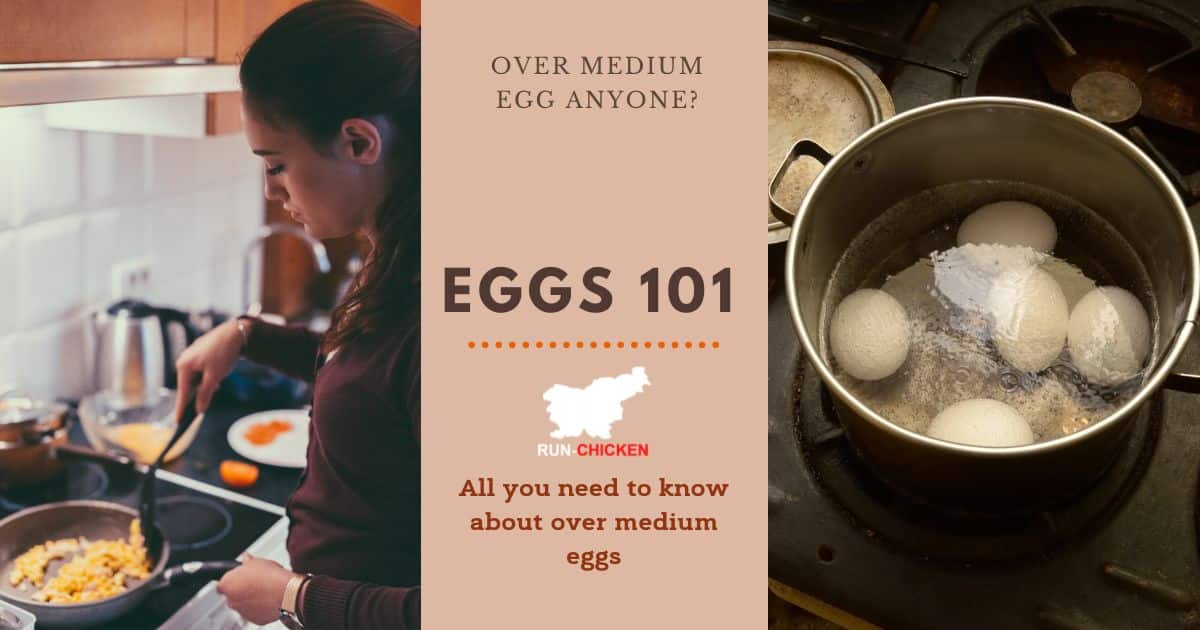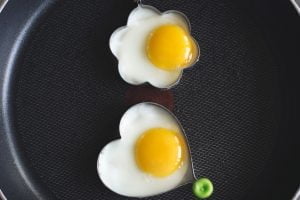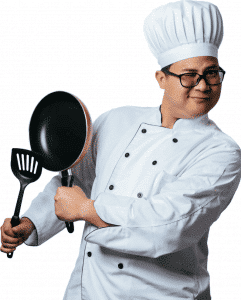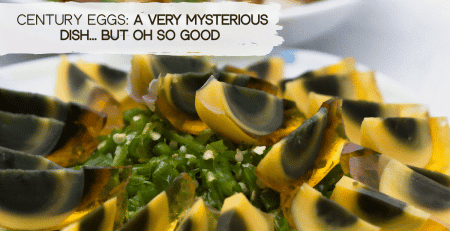Over medium eggs are a delicious way to prepare fried eggs. They are cooked just long enough on both sides to prevent the yolk from being runny. Despite their apparent simplicity, eggs have complex chemistry, and it is crucial to get them just right. Here are some essential tips for achieving that perfect over-medium egg.
The difference between over-easy eggs, over-medium eggs, and over-hard eggs
Three ways you can perfectly cook eggs: over-easy eggs, over-medium eggs, and over-hard eggs. The word “over” is related to the physical activity of flipping the egg. An egg is sautéd on one side and cast on the other side.
- Over easy eggs means that you briskly fry the other side of the egg on the side with the yolk and that the yolk is entirely wet. Some parts of the white might be slightly damped.
- To prepare over medium eggs, you fry them for two minutes. The consistency of the yolk should be jam-like, with a hint of jiggle. They are perfect for dipping toast and delicious with buttered toast. You’ll know if your egg is done when its yolk feels runny, but the white is mostly firm.
- It takes another minute or two to prepare over hard eggs. If you want your egg to come out over hard, cook it over medium. If you don’t care about a runny yolk, try over-hard eggs for your next breakfast or brunch.
Importance of constant temperature control for over-medium eggs
When cooking an egg, it is essential to remember that eggs contain hydrophobic and hydrophilic ends. Hydrophilic ends are attracted to the water within egg white, while hydrophobic ends are drawn to the air in the air pockets. The foam forms a solid when heated, and the hydrophobic end is attracted to the space. When you heat the eggs, it traps water around the protein. It then transforms the white into a gel. This process requires constant temperature control. Here are some quick and easy tips to make a perfect over-medium egg.
A nonstick pan for best over medium eggs
You can achieve it with the right pan. A nonstick pan is the best option for frying an over-medium egg. A cast-iron skillet for example gets hot quickly and holds the heat very well. However, you need to add sufficient oil to the pan and check the edges of the egg frequently. It would be best to use stainless steel pans cautiously because they heat unevenly and produce hot spots. You can best cook fresh eggs in a nonstick pan.
Nonstick spatula handy for delicious over medium eggs
For a perfect over-medium egg, make sure you have a thin nonstick spatula handy, besides the right pan. Use the best-fit spatula to slip underneath the egg as you cook it, and flip it gently so that the yolk doesn’t break. If the yolks break, you can poke them gently with a fork, which could scratch the egg white. Instead, use a thin spatula to slide them into the center. Remember, the difference between an over-medium and an under-medium egg is how quickly you flip it. The egg’s temperature will determine if the yolk is runny or firm.
Can you fry over medium eggs with olive oil?
The oil used for over-medium cooking should be neutral and not have any nagging taste or smell. You can use olive oil for nonstick skillets and cast iron pans. Canola oil and vegetable oil have similar smoke points, and both are suitable for over-medium eggs. But canola oil does have a lower smoke point than vegetable oil and can burn the egg if it’s too hot. These oils are ideal for frying because they are inexpensive and have low smoke points. However, they are high in linoleic acid, an omega-6 fat that has been linked to heart disease, depression, and impaired brain function.
Substitute for oil for perfect over medium eggs
Regardless of your cooking preferences, you may find it challenging to decide between butter and oil. While butter is made from milk fat and cream, it contains high amounts of saturated fat and cholesterol. These fats are responsible for promoting weight gain and increasing the risk of heart disease. While vegetable oil is less saturated than butter, it still has a high glycemic index. In addition to containing saturated fat, butter is rich in vitamin K and E. However, high-quality vegetable oil will also provide the same nutrition. Ultimately, the choice of butter is up to you.
Step-by-step guide for preparing perfect over-medium egg
- First, heat a nonstick skillet over low heat. The egg’s internal temperature is 71 °F. Whites need to be cooked at 180 °F, while yolks need to be cooked at 170 °F. A ten-degree difference can make or break a meal.
- Add some oil, crack the eggs into the pan and let them cook for three minutes. Crack it into a hot skillet to determine if your egg is done. Cook until the whites are set on one side and the yolk is starting to solidify. This step should take three to four minutes.
- Gently flip the egg over and cook it for another minute. Use a thin spatula to separate the egg and flip it. To check the doneness of an egg, jiggle it a bit with a spatula and see if it moves much. If it doesn’t, flip it over and cook it a little longer.
Woo, you just learned all you need to know about over medium eggs! Now it’s your turn to try this in your kitchen. You can continue your culinary journey by reading 8 great omelet tips for cooking with backyard eggs, or you could learn first how to test eggs if they are fresh. The choice is yours! If you have your own flock at home you can keep them safe from predators by mounting automatic chicken coop door Happy chickens lay more eggs, so that you can enjoy cooking over-medium eggs for a long, long time. Come, and share photos of your delicious meals in our Facebook group Chicken&Egg lovers.








